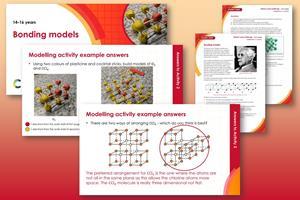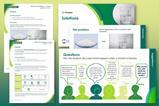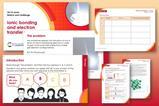This activity gets the students to think of the model they have been taught as a model rather than the truth
Many learners complain during their post-16 chemistry course that their teachers ‘lied’ to them in their pre-16 course. This is particularly true when revisiting atomic structure and bonding in post-16 courses.
Learning objectives
- Model elements and compounds using an alternative representation of electron configuration.
- Compare this alternative model with the dot and cross model of bonding.
- Evaluate this alternative model for electron configuration and bonding.
Introduction
What learners do not appreciate (and perhaps we don’t teach them) is the nature of scientific models and how they are used in science. The general principle is that we use the simplest model available that works for the situation under consideration. We refine or replace the model when it fails to explain or predict observed phenomena. A model should not be regarded as ‘truth’ but as a useful systematic way of explaining or predicting events.
Learners may be aware of an example of this in physics, that at low speeds Newtonian mechanics works fine but at speeds approaching the speed of light Einstein’s special theory of relativity needs to be used.
Some learners will develop the skill of holding alternative models together in their minds and choosing which to use based on the particular question – e.g. alternative models of the bonding in benzene.
This activity gets learners to think of the model that they have been taught as a model rather than the ‘truth’.
How to use this resource
Explain to learners that the aim of the activity is to learn about the nature of models, rather than giving them a new model of bonding.
- When to use? Use after initial teaching or discussion of dot and cross diagrams and covalent and ionic bonding.
- Group size? This could be used with a whole class or as a differentiated activity for part of a class. Learners work in small groups for the modelling and discussion activities.
- How long? Whole lesson (60 minutes).
- Materials? Each group will need some modelling clay (preferably two colours) and several cocktail sticks.
The speech bubble symbol on the PowerPoint means those questions are best tackled as a discussion if a group of learners are doing this activity.
When learners have completed the questions in Activity 1 (either on the printed worksheet or via the questions on the presentation slides) give them the answers (either as a printout or use the presentation slides to discuss as a class). They can check their own work or conduct a peer review of the work of another learner or group.
Answers
You will find answers for Activity 1 and Activity 2 in the teacher notes and on the presentation slides.
Discussion activity (Activity 3)
Advantages of the Lewis cube model
- Highlights that atoms and molecules are three-dimensional, not two-dimensional.
- Easy to show a double bond.
- Gives a rationale for eight electrons in the outer shell.
Disadvantages of the Lewis cube model
- Does not show that electrons go in pairs.
- Very hard to draw complex molecules.
- Cannot represent triple bonds.
- Cannot represent hydrogen and helium, which only have space for two electrons in their outer shell.
- Atoms lower down the periodic table can have more than eight electrons in their outer shell – so you need to abandon the cube for a polyhedron with more corners.
All of the disadvantages listed above would have contributed to Lewis abandoning the cube model but importantly:
- The cubes are too hard to draw in complex molecules.
- Atoms are certainly not cuboid in shape, but neither are they circular, or even truly spherical.
Downloads
Bonding models stretch and challenge lesson slides
Presentation | PDF, Size 2.83 mbBonding models stretch and challenge student sheet
Handout | PDF, Size 0.38 mbBonding models stretch and challenge teacher notes and answers
Handout | PDF, Size 0.53 mbBonding models stretch and challenge lesson slides
Presentation | PowerPoint, Size 10.2 mbBonding models stretch and challenge student sheet
Editable handout | Word, Size 0.67 mbBonding models stretch and challenge teacher notes and answers
Editable handout | Word, Size 0.86 mb
Additional information
This resource was originally published in the book Chemistry for the Gifted and Talented by Tim Jolliff. The book is no longer available for purchase. However, you can find all the resources on our website.
This resource was reviewed and updated in 2025 by Kirsty Patterson.





































No comments yet